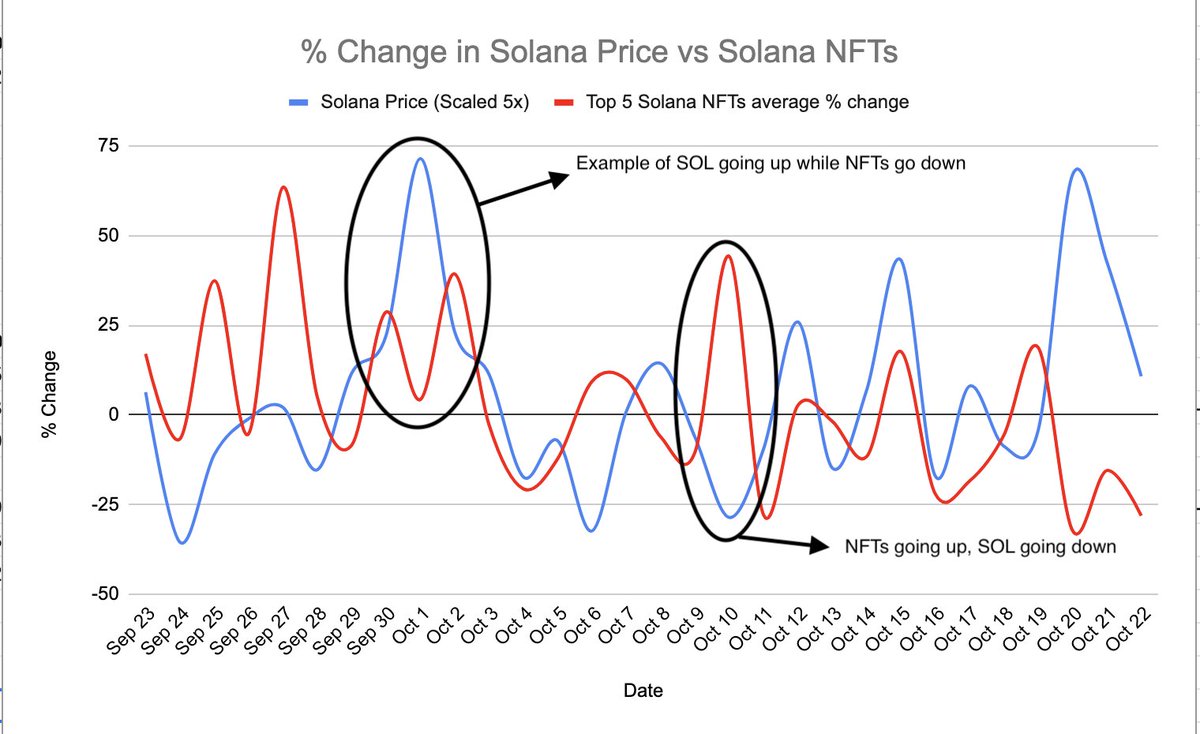
#Solana twitter has been talking a lot about how many NFTs a project should mint.
People think projects with a 10K supply are doomed to fail.
Also, what if most of the NFTs are hoarded by a few whales? Does the decentralization of holders matter?
Let's take a look 👇🧵
People think projects with a 10K supply are doomed to fail.
Also, what if most of the NFTs are hoarded by a few whales? Does the decentralization of holders matter?
Let's take a look 👇🧵
First, let's look at # of tokens.
Most people in the space think that NFTs with 10k supply are bad and that lower supplies are better.
Well - as you can see from this graph, there is absolutely no evidence to back up those claims!
...or is there?
Most people in the space think that NFTs with 10k supply are bad and that lower supplies are better.
Well - as you can see from this graph, there is absolutely no evidence to back up those claims!
...or is there?

The problem is that this data is skewed by the OGs / early movers (Thugbirdz, SMB, DAA).
If we look at the same graph for **new** NFT projects, there is actually some evidence to suggest that projects with lower supplies are faring better than the ones with a higher supply!
If we look at the same graph for **new** NFT projects, there is actually some evidence to suggest that projects with lower supplies are faring better than the ones with a higher supply!

This of course does NOT mean that projects with a 10k supply can't succeed - it just means that the odds are slightly against them (if they are new)
Projects like @DegenApeAcademy and my favorite, @DeGodsNFT, have clearly proven that projects with a 10k supply can do very well.
Projects like @DegenApeAcademy and my favorite, @DeGodsNFT, have clearly proven that projects with a 10k supply can do very well.
Next, what about the number of holders?
Are bigger communities more successful? Or would small tight-knit communities be better?
As you can see from the graph, it does not really matter. Either can succeed and have their pros and cons.

Are bigger communities more successful? Or would small tight-knit communities be better?
As you can see from the graph, it does not really matter. Either can succeed and have their pros and cons.


What if we took the # of owners and divided it by the supply?
Let's call this the "distribution %". For example, if we have a 10k supply and 10k separate owners, then the "distribution" is 100% - meaning no single wallet contains multiple NFTs from the same collection.
👇
Let's call this the "distribution %". For example, if we have a 10k supply and 10k separate owners, then the "distribution" is 100% - meaning no single wallet contains multiple NFTs from the same collection.
👇
If we graph "distribution" vs floor price, we see that there is actually somewhat of a correlation (not great, but not too shabby for real world data).
This seems to suggest that projects that use FLP (@redacted_j) might be better off!
This seems to suggest that projects that use FLP (@redacted_j) might be better off!

To conclude - I want to emphasize that we CAN NOT make strong conclusions from the above since we don't have a big sample, but we can see hints of themes.
Shoutouts:
- @SOLBigBrain for inspiring this post about supply
- @cryptowazza for the data
- @DeGodsNFT for the platform
Shoutouts:
- @SOLBigBrain for inspiring this post about supply
- @cryptowazza for the data
- @DeGodsNFT for the platform
• • •
Missing some Tweet in this thread? You can try to
force a refresh











